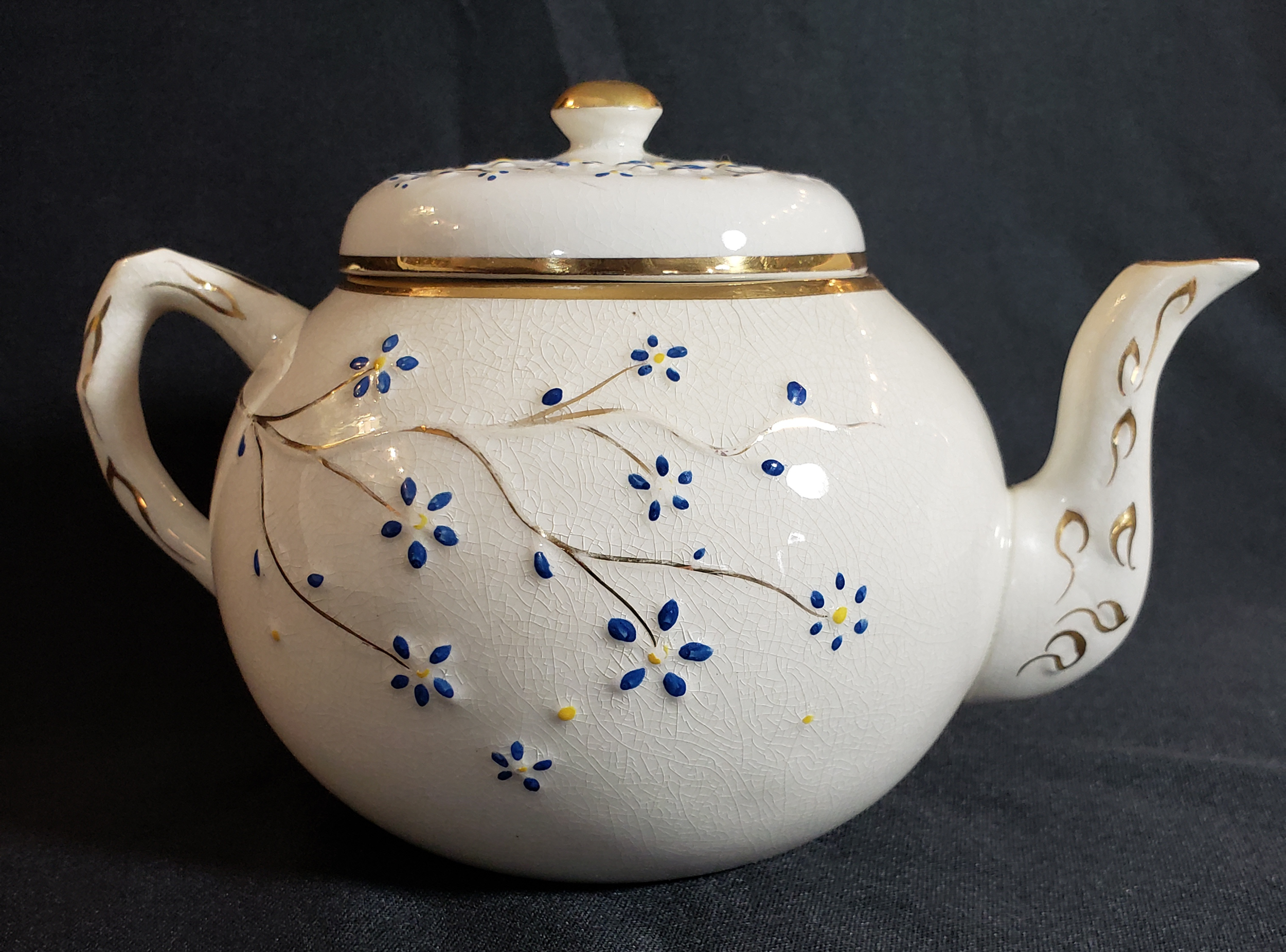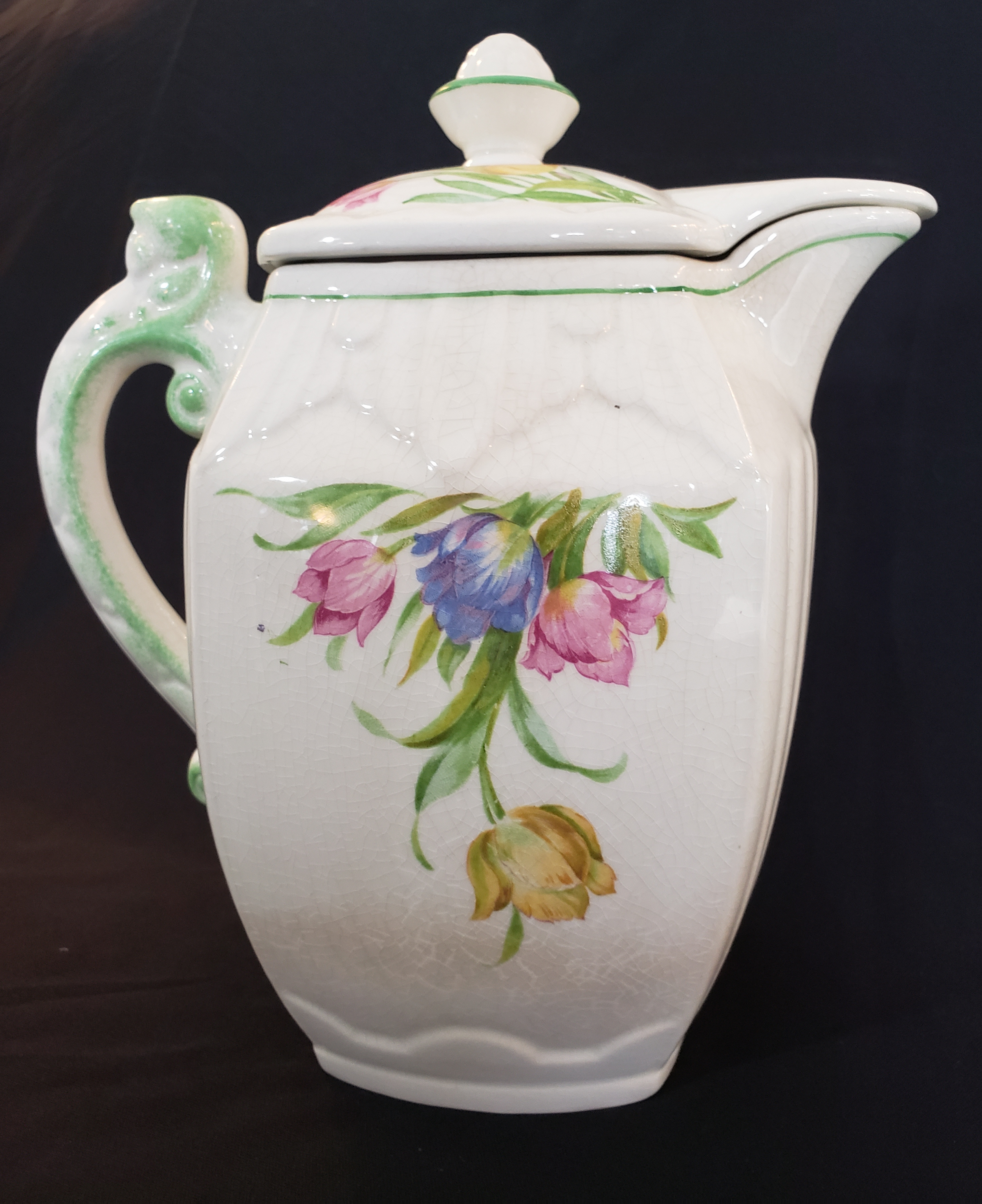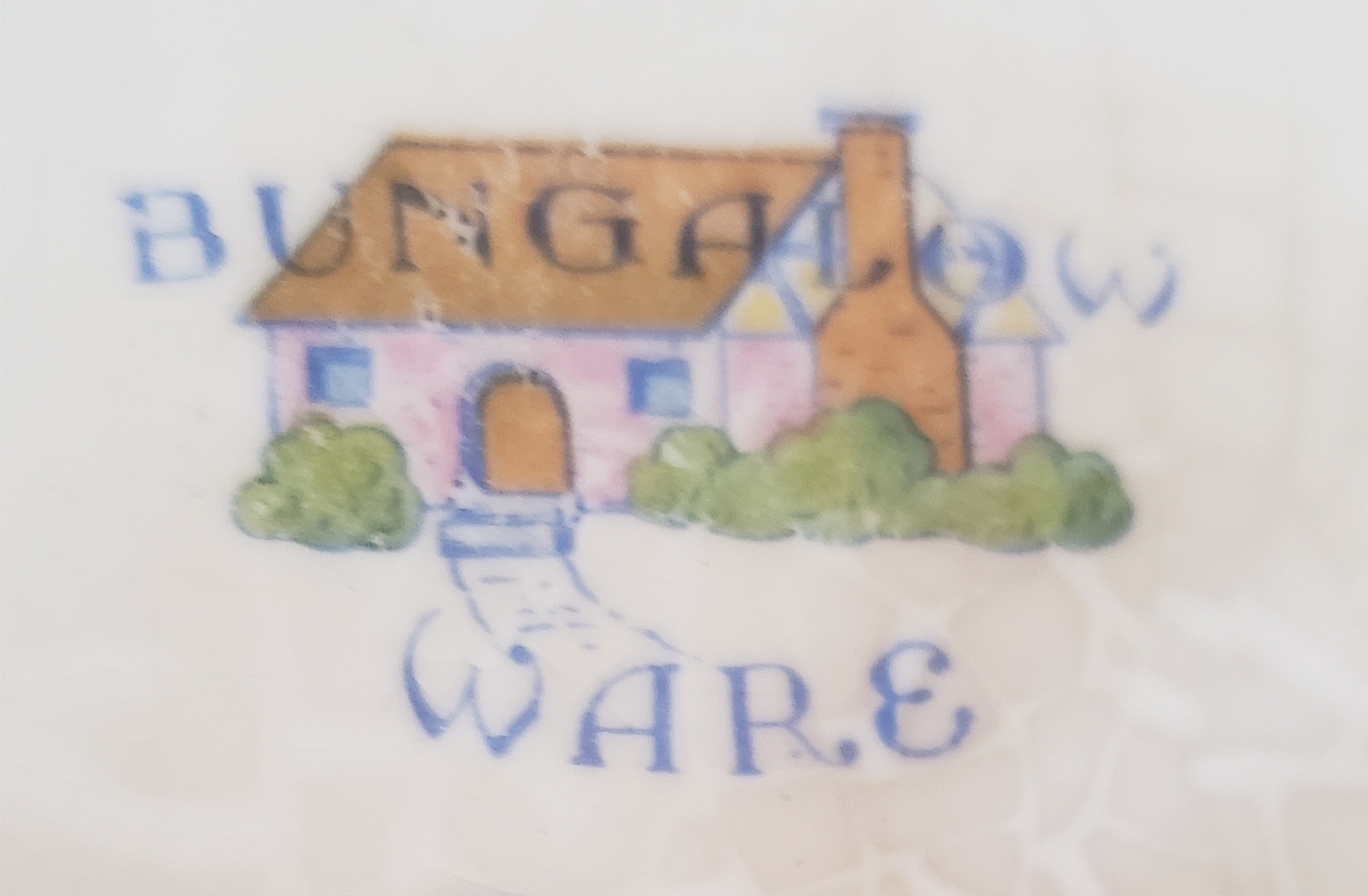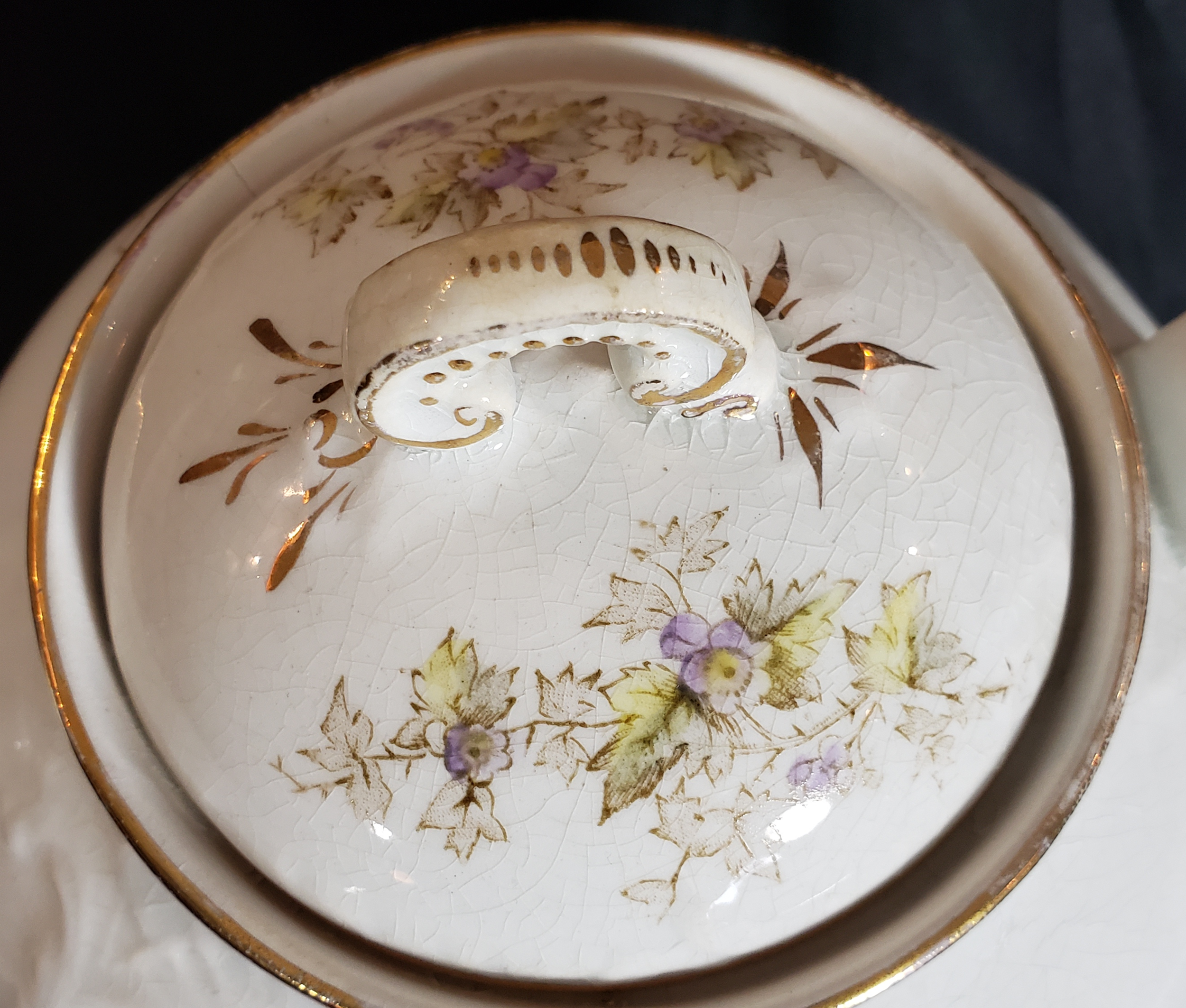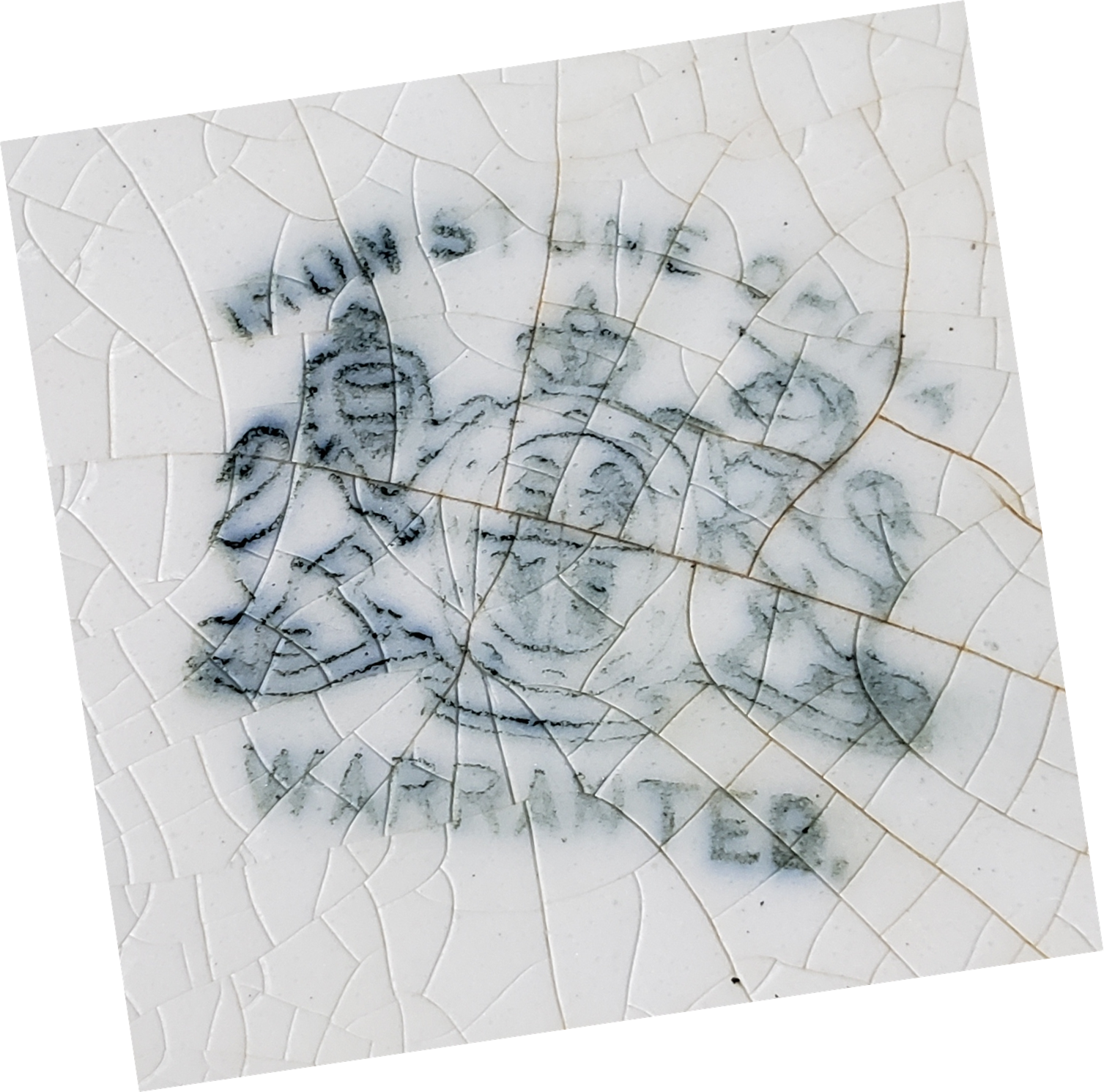William and Donna Gray
Harker Pottery Collection
William and Donna Gray are well known in pottery collecting circles as the experts on Harker Pottery of East Liverpool. They wrote the 2006 publication, "Harker Pottery: A Collector's Compendium from Rockingham and Yellowware to Modern.” Their area of expertise is not limited to Harker but extends to all potteries in the East Liverpool area. Their forthcoming (2021), heavily illustrated book, Amazing Ware Made in the East Liverpool Historical Pottery District will provide valuable information and hundreds of images of ware made in East Liverpool.
The Grays are active members of the Museum of Ceramics. Bill currently serves on the Board of Directors and Donna was the 2017 (and first) recipient of MoC’s Volunteer of the Year Award. Treasures from their vast collections have been featured in nearly all the Museum’s recent temporary exhibits and many of their pieces are featured in this exhibit. They are often called upon to identify ware or to solve a historical mystery. In 2017, they donated a priceless Rockingham inkwell to the Museum (see themuseumofceramics.com/inkwell). They are boosters, supporters, and true friends of MoC.
William and Donna Gray have also contributed many additional teapots to the exhibit.
Follow the links below to see teapots from other East Liverpool Potteries.
TITLE: Republic
MAKER: George S. Harker and Company
DATE: 1879
COLLECTION: (Decorated) Museum of Ceramics/Ohio History Connection H56
(Plain) William and Donna Gray
The first whiteware produced by the George S. Harker Company was the Republic (pictured) and the Cable shapes. Items with the Republic shape, such as this example, were often produced with the Cable shape lids. (Gray, 2006).
TITLE: Savoy
MAKER: Harker Pottery
DATE: 1897-1920
COLLECTION: Museum of Ceramics/Ohio History Connection HC1919
The Harker Potteries began production in 1840 in a small log cabin pottery and closed in 1972 after 132 years of continuous production and service in the East Liverpool Pottery District.
TITLE: Savoy
MAKER: Harker Pottery Company
DATE: 1890
COLLECTION: William and Donna Gray
Benjamin Harker arrived in East Liverpool in 1839 with his son George. He left his family behind in Pittsburgh while he went in search of a farm to purchase along the Ohio River. After meeting Abel Coffin and looking at his farm, the Harkers agreed to purchase the riverbank farm. (Cox, 1938).
TITLE: Attante
MAKER: Harker China Company
DATE: 1891
COLLECTION: William and Donna Gray
The Harker China Company was one among several local potteries that put out a newsletter for employees. The newsletter included pottery news and local and plant gossip. The Harpco News covered everything from the outrageous cost of watermelons to the “vacations” of striking Laughlin employees and updates on the baseball World Series. (Harpco, 1943)
This whiteware pot features handlined gold and handpainted flowers.
TITLE: Bedford
MAKER: George S. Harker and Company
DATE: 1884-1890
COLLECTION: William and Donna Gray
A 1937 Potters Herald article reported on the use of “script” (a note in lieu of payment for work) instead of cash pay during 1854.
The article documents how a script for $2 worth of labor could be exchanged for ware at the Harker and Smith pottery. The worker, Phillip Goodwin, entered the local general store ran by Josiah Thompson and was allowed to purchase what he needed. Later, Josiah would take the script, with others he had received, and travel to Pittsburgh to his wholesaler to purchase for his store. The wholesaler accepted the script and allowed Thompson to select what he needed. In the Fall of the year a buyer for the wholesaler would arrive at the Harker and Smith Pottery and was allowed to take ware in exchange for the script. The script was then burned by Benjamin Harker, except the one from Phillip Goodwin, that fell to the floor and was later discovered and saved proving that business could be successfully undertaken in the worst of economic times. (Cox, 1937).
Transfer printing was applied to this pot and then a decorator added touches of blue for a more complete look.
TITLE: Bungalow Ware
MAKER: Harker Pottery
DATE: 1930s
COLLECTION: William and Donna Gray
Harker Pottery moved across the Ohio River to West Virginia in 1931. Many of the larger East Liverpool potteries had made the move. For most, it was a matter of cost effectiveness and protection against the losses from regular flooding of the Ohio River. Chester and Newell, West Virginia sat on a rise in the river bank whereas the Ohio side of the river sat level with the water. Potteries, including Harker, were originally built at or below Second Street in the East Liverpool. Travelling east along the river the properties were highly susceptible to flooding in the years before the water management of a series of locks and dams. Harker recorded devastating floods in 1852, 1865, 1884, 1907, 1908, 1913 and in 1924. In 1908 when the plant flooded twice within a month, “the old pumping station near Harker's pottery was kept running on both occasions though water covered its floor to a depth of four feet.” Platforms were built above the flood water, which enabled continued production. (Barth, 1926).
This teapot is decorated by a process called decalomania. Is the decal upside down? Hmmm.
TITLE: Dixie
MAKER: Harker Pottery
DATE: 1897-1920
COLLECTION: William and Donna Gray
In 1839/1840 James Bennett arrived in East Liverpool to build the first pottery in the then small village. Although many scoffed at Bennett, Benjamin Harker saw the value in his endeavors and sold him clay from his land along the river. In 1840 Harker opened his own pottery from his log cabin. He hired John Goodwin, a potter from Staffordshire, England to run the pottery and teach his two sons the pottery trade. In 1850, Harker, Taylor (James L.) Company entered their ware in an exhibition in Boston, Massachusetts. It was unheard of at the time, in the Eastern United States, that American ware would be on a par with or even considered better than English or European ware. The pottery won an award for achievement in Rockingham ware at the exhibition. (Cox, 1941).
At one time the Harker China Company was the longest continually running pottery in the World.
In an effort to keep business going, salesmen would go from store to store in small American towns selling Harker ware. However, when each store wanted a Harker “exclusive,” the pottery devised a plan where it customized colorful, but different, back stamps for the similar ware. There were four of these back stamps, Sun-Glow Bakerite, Hotoven, Oven Ware and the Columbia China Company. The marks were soon discontinued since the ploy was unsuccessful. (Gates, 2009).
TITLE: Sunglow Bakerite
MAKER: Harker Pottery
DATE: 1930s-1940s
COLLECTION: William and Donna Gray
TITLE: Waverley
MAKER: Harker Pottery Company
DATE: 1890
COLLECTION: William and Donna Gray
Transfer printing was the most common method of decorting at the turn of the century. Tissue paper was used to lift a pattern from an engraved copper plate and then applied to the ware. Often a decorator would then apply color to the pattern,
Tea Trivia:
Ever wonder if Orange Pekoe tea has oranges in it? It does not. The name was derived from the Dutch House of Orange and has to do with a term that was used to grade black teas. (Kenna, 2021).
Columbia Chinaware was a subsidiary of the Harker Pottery Company; the marketing was focused on small town communities.
Tea Trivia:
Afternoon Tea is also called Low Tea. It is a formal tea that allows light snacks to be served before dinner. It got its name because it was served in sitting rooms at the low tables near the chairs and sofa. High Tea was created during the Victorian era when an evening meal was eaten with the tea. These foods were eaten at high dining tables. (Kenna, 2021).
TITLE: Columbia Chinaware
MAKER: Harker Pottery Company
DATE: 1930-1935
COLLECTION: William and Donna Gray
TITLE: Elodie
MAKER: George S. Harker and Company
DATE: 1888
COLLECTION: William and Donna Gray
Harker Pottery used the plain round Tea Leaf motif, in gold, on it’s semi-porcelain ware. This Elodie example is one of the few Harker Tea Leaf teapots to have survived. (Upchurch, 2005).
Tea Trivia:
In the late 1800s, green tea was the most popular tea in the United States. During World War II, green tea sources were unavailable to Americans. So, tea was then imported from India, which was a producer of black tea. After the war, black tea took over as the most popular type of tea. (Kenna, 2021).
See more William and Donna Gray Teapots from these potteries: Homer Laughlin China and C.C. Thompson Company; Sebring Brothers, Cartwright Brothers, Mountford, Taylor, Lee & Smith, Dresden and Morley and Son; Knowles, Taylor & Knowles, Vodrey & Brother and Smith-Phillips; D.E. McNicol, Wallace & Chetwynd, East End China, Sevres and National; Potters Co-operative, French China and Burford Brothers; Godwin Flentke, Wm. Flentke, East Liverpool Pottery, Warner-Keffer, Goodwin Brothers, East Liverpool Potteries, Brunt, Bloor and Wm Brunt; Knowles, Taylor & Knowles Lotus Ware; Early Rockingham







